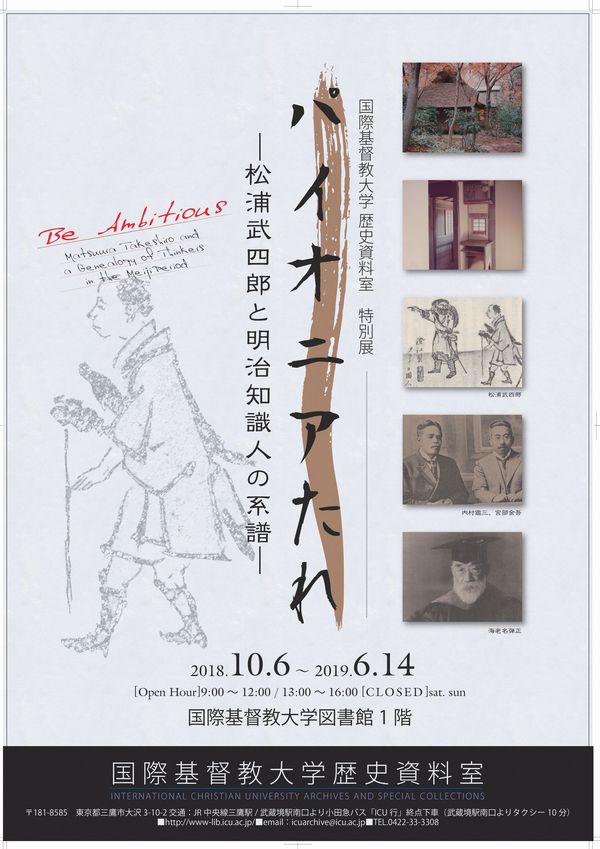Be Ambitious - Matsuura Takeshiro and a Genealogy of Thinkers in the Meiji Period
Exhibition Period
- October 6th, 2018 ~ June 14th, 2019
Exhibition outline

The year 2018 marks a milestone for 19th-century explorer and author Takeshiro Matsuura, falling on the 200th anniversary of his birth and the 130th anniversary of his death. He was active from the closing days of the Tokugawa shogunate to the Meiji era (1868-1912) and is also known as a godparent of Hokkaido. His great accomplishments cover such a broad range of fields that they cannot be expressed in a word or two. Takeshiro spent more than eight years to build a study room, dubbed “Ichijo-jiki” or a room just the size of “ichi jo” or one tatami mat, based on time-honored pieces of wood collected through the good offices of people he got acquainted with during his journey. Within the one-mat room of minuscule space extends a microcosm where the thoughts of Takeshiro, who greeted his celebratory age of 70 then, and of his friends appeared to be amassed. Why was it the size of one mat? To find answers to this and other questions, please visit the “Ichijo-jiki left in ICU” exhibition being held in the Hachiro Yuasa Memorial Museum simultaneously with this exhibition. At the special exhibition of the ICU Archives, we will trace the track record of Christian intellectuals who led to the opening of the ICU, beginning with Takeshiro in connection with the reason why “Ichijo-jiki” is in this school, a Christian university established after the end of World War II.
In the Meiji era, Christian groups which constituted mainstream Protestant missionary work in Japan were called the Yokohama Band, Kumamoto Band and Sapporo Band according to the names of relevant places. In particular, botanist Kingo Miyabe, known as a leading figure of the Sapporo Band, had close ties with Takeshiro. Miyabe sought to study botany under the influence of Takeshiro. Kanzo Uchimura, who was among the second group of students enrolled at Sapporo Agricultural College as was Miyabe, played a leading role in the Sapporo Band to become a figure never to be forgotten in tracing the history of Christians in Japan.
The special exhibition takes up a wide range of exchanges among Christian intellectuals in the Sapporo and Kumamoto bands, overlapping Takeshiro’s great achievements over the pioneering spirit as seen from that. By assuming the ICU as something down the stream of history of what has been taken over from such a human network, we hope to offer an opportunity for considering the pioneering spirit that underlies this university.
In the Meiji era, some people loudly called for “frontier development” in a condescending, pushy manner seeking to develop something obscure. Against that background, Takeshiro advised the government to pay close attention to the native people of “Ezochi,” as Hokkaido was called then. Such a humble attitude as his provides us with a good opportunity to consider “what a true pioneer is” and “what the ICU’s pioneer spirit is” when we live in an increasingly globalizing contemporary world.
